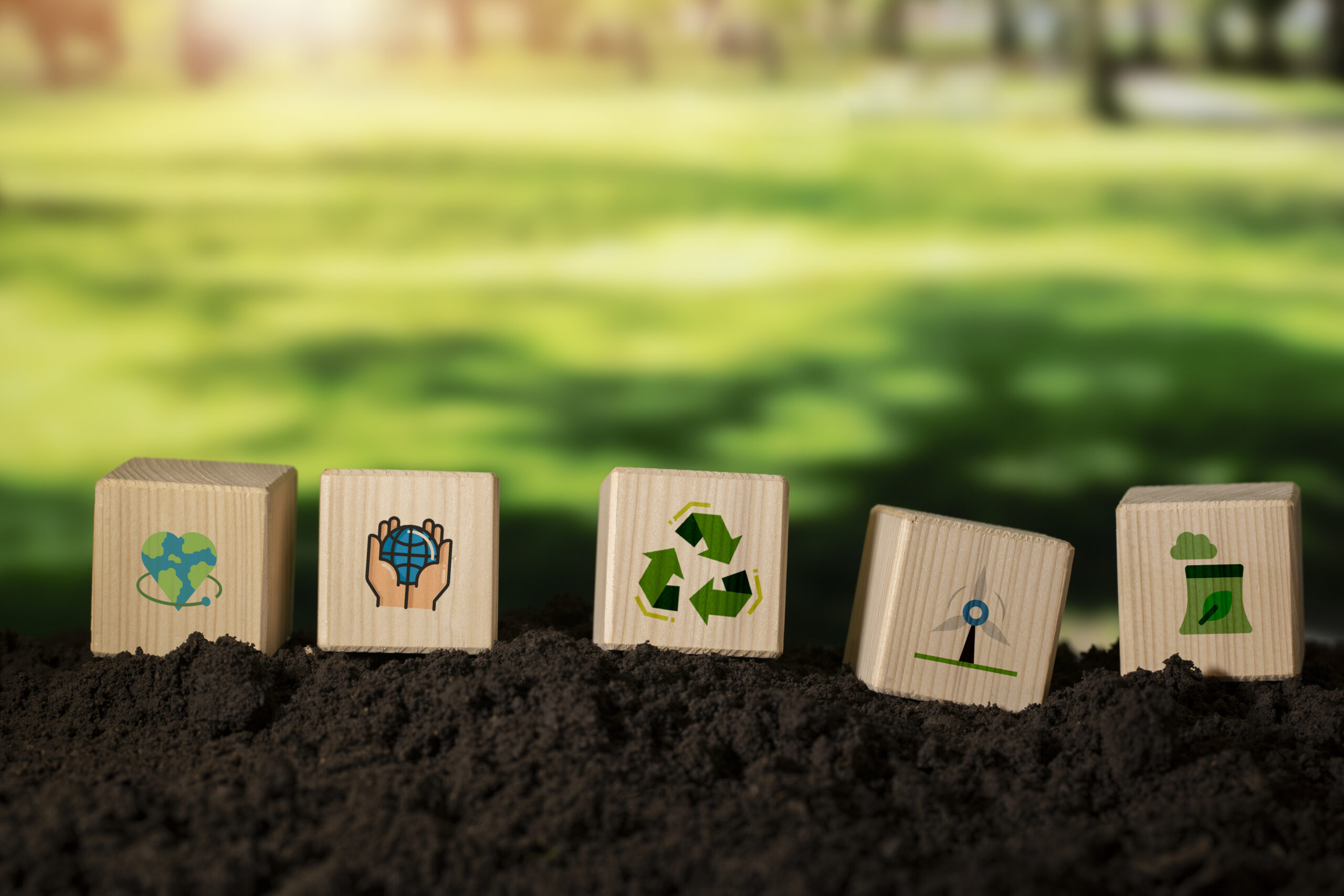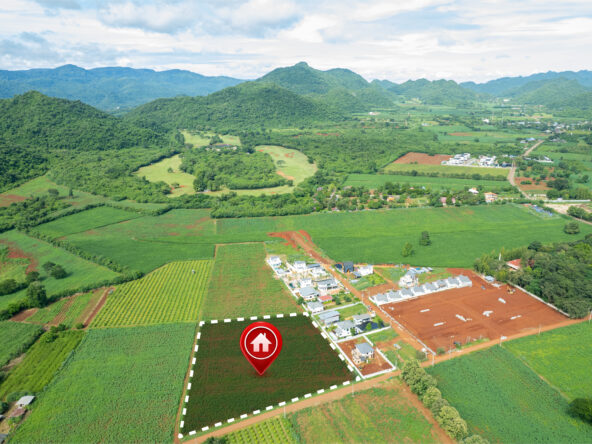Introduction
Hey nature enthusiasts, eco-warriors, and all-around planet pals! 🌿 Let’s embark on a journey that combines the thrill of investment with the warm fuzzies of environmental conservation. Welcome to the realm of “Investing in Nature: A Greener Wallet Adventure” – where we explore the magic that happens when your financial portfolio teams up with the planet-saving squad.
In a world buzzing with environmental challenges, we often find ourselves wondering, “How can we make a real difference?” Well, hold onto your hats, because investing in land for environmental conservation is not just a solution; it’s a win-win strategy that gives back to Mother Earth while padding your wallet with some eco-friendly currency.
Picture this: lush green landscapes, thriving ecosystems, and a planet where biodiversity is celebrated. That’s the dream, right? Well, investing in land for conservation is like turning that dream into a reality. So, grab your virtual binoculars and join us as we dive into the heart of this eco-adventure, exploring the importance of preserving biodiversity, mitigating climate change, and managing water resources sustainably.
Why does this matter? Because, my friends, we’re facing challenges that demand more than just good intentions. We need action, and we need it now. But fear not! The exciting world of land investment for environmental conservation is here to show us how we can be both savvy investors and superheroes for the planet.
So, buckle up for a ride through the green hills of conservation, where financial gains meet environmental stewardship, and together, we embark on a win-win strategy that promises a brighter, greener future for us all. 🚀🌍✨
Benefits of Land Investment for Environmental Conservation
- Saving the Critters: A Biodiversity Bonanza 🌳🐾
Let’s talk about being a hero for our furry, feathery, and scaly friends. When you invest in land for conservation, you’re basically throwing a party for biodiversity. Natural habitats become safe havens, providing shelter and sustenance for a staggering array of species. Imagine a real-life version of Noah’s Ark, where every creature has a spot to call home. From the tiniest insects to majestic apex predators, your investment becomes a VIP pass to the coolest wildlife hangout.
And it’s not just about the animals; it’s about maintaining the delicate dance of nature. Each species plays a role, creating a harmonious ecosystem where everyone has a part to play. So, when you invest in land, you’re not just planting trees; you’re nurturing an entire symphony of life.
- Cooling Down the Planet: Earth’s Natural Air Purifier 🌍❄️
Worried about the rising temperature? Time to invest in the ultimate climate control system – nature itself. Picture a forest as a colossal air purifier, soaking up carbon dioxide like a sponge. Investing in land conservation means safeguarding these carbon-absorbing powerhouses, playing a crucial role in tackling climate change.
Forests, wetlands, and other natural landscapes act as the Earth’s lungs, inhaling carbon dioxide and exhaling life-enabling oxygen. So, by putting your money into land, you’re not just making an investment; you’re becoming a climate change superhero. It’s like giving the planet a refreshing breath of crisp, clean air.
- Water, Water Everywhere: The Aqua Advantage 💧🌊
Clean water is a treasure, and land investment can be your golden key to ensuring its abundance. When you conserve land, especially around watersheds, you’re putting on a superhero cape for local communities. Protected areas act as guardians, preventing pollution and ensuring a steady flow of pure, life-sustaining water.
Imagine a world where rivers and streams are crystal clear, teeming with life, and ready to quench the thirst of both humans and wildlife. Your investment in land for water resource management is like ensuring a never-ending flow of hydration for the planet – a win-win for nature and the communities that rely on these water sources.
In a nutshell, land investment for environmental conservation isn’t just about saving the planet; it’s about creating a haven for biodiversity, stabilizing our climate, and securing the abundance of clean water for generations to come. So, gear up, eco-enthusiasts, because your investment isn’t just a financial move; it’s a pledge to protect and preserve the wonders of our planet. 🌱🌎✨
Financial Incentives for Land Investors
- Tax Perks and Green Dollars 💸🌱
Alright, let’s talk about the kind of green that not only fills your wallet but also helps the environment – cold, hard cash. Governments around the globe are offering some sweet incentives to those who decide to put their money where their heart is and invest in land for conservation.
- Tax Credits and Deductions:
Think of it as a tax break for being an eco-hero. Governments roll out the red carpet with tax credits and deductions for those who choose to conserve their land. By entering into conservation easements, you’re essentially locking in your commitment to protect the natural beauty of your property. And as a token of appreciation, the taxman rewards you with some deductions – a win-win where your investment not only grows but also comes with a side of tax relief.
- Grant Programs:
But wait, there’s more! If tax breaks aren’t enticing enough, enter grant programs. Governments, at various levels, are throwing their weight behind land conservation initiatives. These grant programs are like the golden ticket for your eco-friendly endeavors. They provide financial support to individuals and organizations committed to preserving the precious landscapes that make our planet a stunning tapestry of biodiversity.
- Teaming Up with the Green Squads 🤝🌿
Now, let’s talk about the power of collaboration. Ever dreamt of being a sidekick to the environmental superheroes? Well, here’s your chance. By teaming up with environmental organizations and NGOs, you’re not just investing in land; you’re joining forces with the experts in conservation.
- Collaboration with Environmental Organizations:
Imagine your investment being part of a grander plan. Environmental organizations are always on the lookout for passionate partners, and that’s where you come in. Your investment becomes a catalyst for impactful projects – whether it’s restoring habitats, planting trees, or creating wildlife corridors. It’s like having a direct line to the Avengers of the environmental world, making your investment more impactful than ever.
- Sustainable and Profitable Land Use Practices:
Now, let’s bust a myth – the idea that conservation and profitability are like oil and water, never mixing. Think again! Your investment can pave the way for sustainable and profitable land use practices. From eco-friendly tourism to responsible forestry, the possibilities are vast. By choosing practices that balance economic gains with environmental goals, you’re not just nurturing the land; you’re nurturing your financial portfolio.
So, in the realm of financial incentives for land investors, it’s not just about counting dollars; it’s about counting the positive impact you can make on the planet. Tax perks, grants, and collaborative efforts are the secret sauce that transforms your investment into a force for good, creating a greener, more sustainable future for all. 💰🌎✨
Case Studies
Real-Life Heroes
Time for some success stories! Ever heard of land investments turning barren spaces into bustling ecosystems? We’re talking about success stories that warm your heart and make you want to plant a tree right now.
Case Studies: Unveiling Success Stories in Green Investments 🌿📈
1. Reviving Barren Lands: The Miracle of Reforestation
Location: Amazon Rainforest, Brazil
In the heart of the Amazon Rainforest, a visionary investor decided to take a stand against deforestation. By acquiring a vast tract of degraded land, this eco-pioneer embarked on a journey of reforestation. Fast forward a few years, and the once barren landscape is now a thriving forest ecosystem. Indigenous flora and fauna have made a comeback, and the investor not only witnessed a resurgence of biodiversity but also turned a once-neglected piece of land into a sustainable, carbon-sequestering asset.
Key Takeaway: Investing in land with a commitment to reforestation can yield both ecological and financial benefits, showcasing the potential for turning environmental challenges into success stories.
2. From Concrete Jungle to Urban Oasis: Redeveloping Brownfields
Location: Former Industrial Zone, United States
In the heart of an urban landscape plagued by industrial pollution, a forward-thinking investor saw potential where others saw despair. Acquiring a brownfield, once abandoned due to contamination concerns, the investor transformed it into a vibrant urban oasis. Through careful remediation and sustainable landscaping, the brownfield now stands as a testament to the potential of eco-friendly urban development. The investor not only contributed to local environmental health but also created a sought-after green space, attracting businesses and residents alike.
Key Takeaway: Brownfield redevelopment showcases how strategic land investments can lead to the revitalization of urban spaces, offering both environmental and economic benefits.
3. Coastal Conservation: Protecting Marine Ecosystems
Location: Coastal Property, Australia
In the land-down-under, an investor recognized the fragility of coastal ecosystems and took action. By acquiring a stretch of coastal property, the investor implemented conservation measures to protect vital marine habitats. The result? A thriving coastal ecosystem where mangroves, seagrasses, and coral reefs flourish. Beyond preserving biodiversity, the coastal property became a hub for sustainable tourism, generating income for the investor while promoting environmental awareness.
Key Takeaway: Coastal conservation investments not only safeguard marine ecosystems but can also contribute to sustainable tourism, creating a win-win scenario for nature and investors.
4. Community-Centric Conservation: Empowering Local Stakeholders
Location: Community-Owned Lands, Kenya
In the vast landscapes of Kenya, a community-led conservation initiative took center stage. Recognizing the importance of involving local communities, an investor partnered with indigenous groups to protect their ancestral lands. The community became stewards of the land, implementing sustainable land management practices and wildlife conservation efforts. This collaborative approach not only preserved biodiversity but also empowered the local community through job creation and eco-tourism initiatives.
Key Takeaway: Community-centric conservation demonstrates the transformative power of empowering local stakeholders, fostering a sense of ownership that leads to sustainable, long-term environmental preservation.
These case studies exemplify the diverse ways in which land investments for environmental conservation can yield positive outcomes. From reforestation and urban revitalization to coastal protection and community engagement, each success story reinforces the idea that green investments can be both environmentally impactful and financially rewarding. They serve as beacons of inspiration for those looking to embark on their own journey of sustainable land investment. 🌍🌱💡
Future Trends in Land Investment for Conservation
Tech Talk and Global Initiatives
What’s on the horizon? Tech is taking over the conservation game. We’ll chat about satellite wizardry and how data is the secret sauce for making smart conservation decisions. Plus, global initiatives are uniting forces to tackle environmental challenges. It’s like a worldwide superhero team-up!
Conclusion
To sum it up, investing in land for environmental conservation isn’t just about being an eco-warrior; it’s a smart move for your wallet too. From saving species to cooling down the planet, the perks are endless. So, next time you’re thinking about where to put your hard-earned cash, consider making Mother Nature your business partner. It’s not just an investment; it’s a commitment to a greener, healthier future for everyone. 🌎✨




